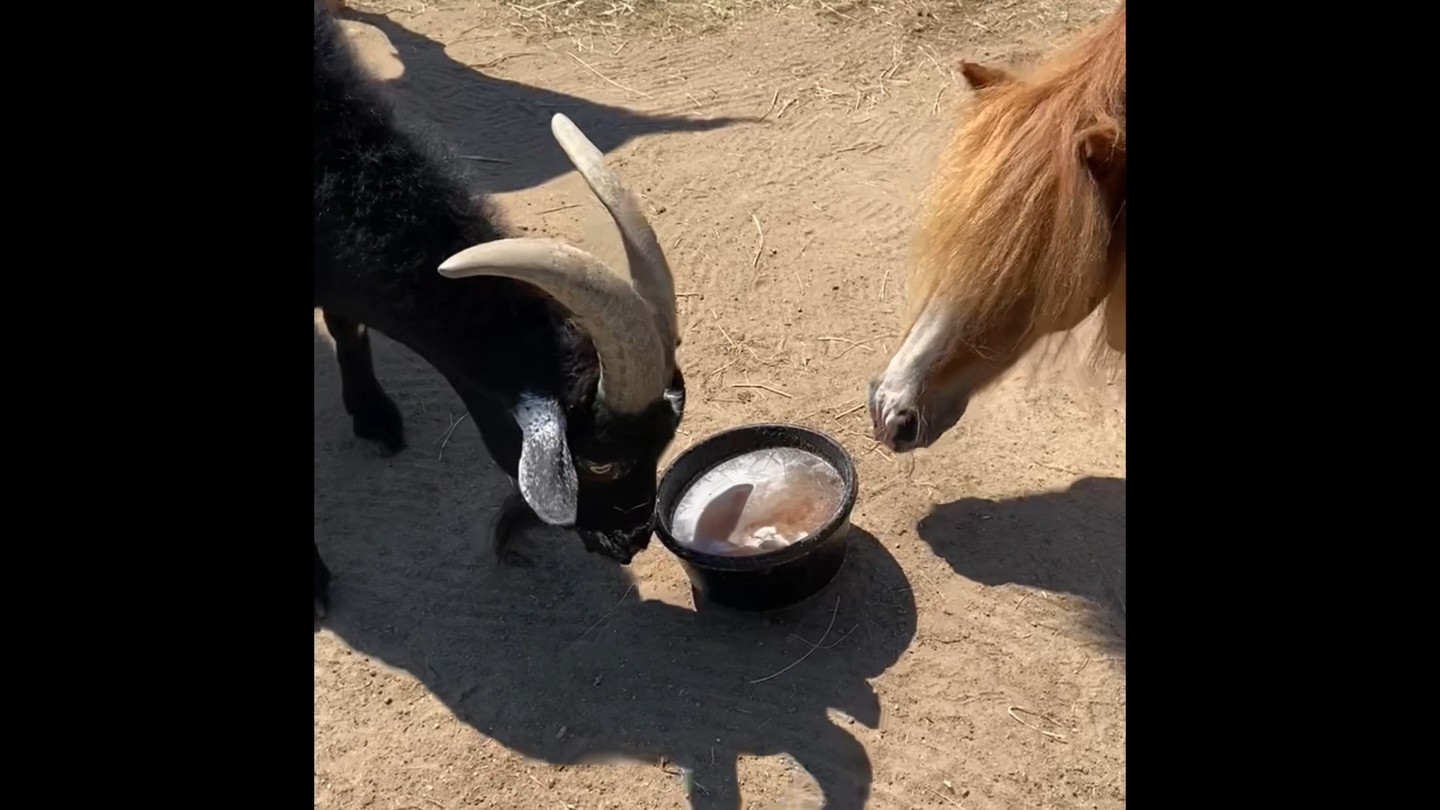The Popsicle Party!!! 🍧
Summary:
– Introduction to the Popsicle Party and its purpose
– The Flehmen’s response and its significance in animals
– The unique ways zoos keep animals cool during the summer
– Fun and intriguing facts about animals and their behavior during hot weather
Have you ever wondered how animals beat the heat during those scorching summer months? Well, here at our zoo, we have a unique and entertaining solution called the Popsicle Party! Yesterday, one of our swing keepers delighted our mini-farm animals with some beet pulp ice cubes – a refreshing treat that helps them cool down and brings out some fascinating behaviors. So, let’s dive into the Popsicle Party and discover the intriguing aspects of this icy affair!
First things first, let’s talk about the Flehmen’s response. You might have noticed it in the video of our donkey and horse enjoying their popsicles. It was not just for show when they curled their lips and made that hilarious face. This response has a purpose. The Flehmen’s response is a behavior observed in various animals, including horses, cats, and even giraffes. It involves curling the upper lip and drawing air over a special olfactory organ located on the roof of the mouth. Why do they do this? Well, it turns out that this organ is a chemical receptor for moisture-bourne odors. In simple words, they’re sniffing out smells uniquely!
We lovingly call this face the “stink face” because it resembles humans’ expression when they smell something unpleasant. But for these animals, it’s a way to better understand their surroundings and gain valuable information. It’s almost like they’re having a sensory party while enjoying their Popsicle treat!
Now, let’s talk about the Popsicle Party itself. During the summer, when temperatures rise, zookeepers must find creative ways to help our animals beat the heat. And what better way than with some delicious and refreshing treats? The beet pulp ice cubes that were made for our mini-farm animals are a perfect example of that.
But the Popsicle Party doesn’t stop there! We have a range of icy delights for different animals in the zoo. From frozen fruit treats for primates to fish popsicles for our aquatic friends, we leave no stone unturned when it comes to cooling down our furry, feathery, and scaly residents.
Besides the treats, the environment also plays a crucial role in keeping the animals cool. We have carefully designed habitats that provide shade, water misters, and even specially constructed pools that help various species stay comfortable in the summer heat. It’s all about creating a haven for our animals and ensuring their well-being.
Now, let’s take a fun and unexpected turn as we delve into some intriguing facts about how animals behave during hot weather. Did you know that elephants, for example, have a unique cooling mechanism? When the temperatures rise, they flap their enormous ears, creating a breeze that helps dissipate heat from their bodies. It’s like having built-in air conditioners!
And what about those delightful sunbathing turtles? They might seem lazy, but they’re quite smart. Turtles raise their body temperature by basking in the sunlight and increasing their metabolic rate. This prompts them to digest their food more efficiently and ensures they receive all the necessary nutrients to stay healthy.
Now, let’s not forget our avian friends. Birds have their version of Popsicle parties too! Some species, like penguins, can control blood flow to their extremities. During hot weather, they send less blood to their feet, limiting heat absorption and instead focusing on regulating their core body temperature. Chat about cool adaptability, huh?
As we wrap up our exploration of the Popsicle Party, it’s clear that there’s something truly special about seeing animals enjoy their frozen treats and finding innovative ways to keep them comfortable during the summer. It’s a testament to the dedication of zookeepers and the level of care provided to every animal.
So, the next time you visit a zoo or spot animals having their own Popsicle Party, remember the fascinating behaviors and incredible adaptations that come to light during those hot summer days. It’s a reminder of the vibrant and diverse tapestry of the animal kingdom, always ready to surprise and captivate us with its unique ways of thriving in the face of changing seasons.
*****
Source Description
Popsicle Party!!! 🍧
Yesterday one of our swing keepers made some beet pulp ice cubes for our mini-farm animals! This is one of the many ways we help keep our animals cool during summer.
You might notice in the video our donkey and horse curl their lip after trying the Popsicle. This is called the Flehmen’s response! Animals typically do this to draw in smells to a special olfactory organ that is a chemical receptor for moisture-bourne odors!
We affectionally call it their “stink face.” ❤️

